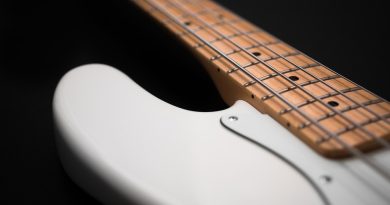Mastering Palm Muting: A Beginner’s Guide to Perfecting Your Guitar Technique
Mastering Palm Muting: A Beginner’s Guide to Perfecting Your Guitar Technique
As a guitarist, mastering palm muting is an essential technique that can take your playing to the next level. Palm muting involves using the fleshy part of your picking hand to dampen the strings while you play, creating a muted and percussive sound. This technique is commonly used in rock, metal, and punk music to add dynamics and rhythm to guitar riffs and solos. In this beginner’s guide, we will cover the basics of palm muting and provide tips for perfecting your technique.
What is Palm Muting?
Palm muting is a technique used by guitarists to create a muted and percussive sound by resting the edge of their picking hand on the strings near the bridge of the guitar. By applying pressure with the palm of the hand, the strings are partially muted, resulting in a thudding sound that adds rhythmic emphasis to the music. Palm muting is typically used on the lower strings of the guitar to create a chugging effect, but it can also be used on higher strings for a more subtle muted sound.
How to Palm Mute
To palm mute, place the edge of your picking hand near the bridge of the guitar, resting the fleshy part of your palm on the strings. Experiment with the angle and pressure of your hand until you find the desired level of muting. It’s important to strike a balance between muting the strings enough to create a percussive sound, but not so much that the notes are completely deadened. Practice palm muting with different strumming patterns and chord progressions to develop a feel for how to apply the technique in various musical contexts.
Tips for Perfecting Your Palm Muting Technique
1. Start Slow: When learning palm muting, start by practicing slowly and gradually increase your speed as you become more comfortable with the technique. Focus on maintaining a consistent muting pressure and hand position as you play.
2. Use the Correct Hand Position: Make sure to position your hand near the bridge of the guitar, with the fleshy part of your palm resting on the strings. Experiment with the angle and pressure of your hand to find the sweet spot that produces the desired muted sound.
3. Focus on Dynamics: Palm muting can add dynamics and variation to your playing. Experiment with combining palm muted sections with open chords and regular strumming to create contrast in your music. This will help you develop a greater sense of musicality and rhythm.
4. Practice with a Metronome: To improve your timing and rhythm, practice palm muting exercises with a metronome. Start at a slow tempo and gradually increase the speed as you become more comfortable with the technique. This will help you develop a solid sense of timing and groove.
5. Listen to Examples: To master palm muting, listen to songs by guitarists who are known for their use of the technique, such as James Hetfield of Metallica or Tom Morello of Rage Against the Machine. Pay attention to how they incorporate palm muting into their playing and use it to create a signature sound.
6. Experiment with Different Techniques: Palm muting can be used in a variety of ways, from creating heavy chugging riffs to adding subtle accents to lead lines. Experiment with different techniques, such as palm muting while playing power chords or adding muted strums in between open chords, to expand your musical palette.
In conclusion, mastering palm muting is an essential skill for any guitarist looking to add dynamics and rhythm to their playing. By following the tips outlined in this beginner’s guide and practicing regularly, you can perfect your palm muting technique and take your guitar playing to the next level. Remember to start slow, focus on hand position and dynamics, and experiment with different techniques to develop your own unique sound. With dedication and practice, you will soon be palm muting like a pro.






